Has the Craft of Writing Improved?
While some people believe the classics were the pinnacle of storytelling, this way of thinking overlooks how much writing has transformed and adapted over time to become more accessible, diverse, and better able to mirror our complex world. Just as visual art evolved from the simplicity of cave paintings to the sophistication of the Renaissance, the craft of writing has transformed in a similar way, adapting to new eras and technologies.
That’s why today, Ginger is diving into the evolution of storytelling, celebrating the leaps from stone tablets to e-books and highlighting how these advances have made literature richer and more inclusive. It’s a journey through the past, present, and future of writing, proving that while the classics will always hold a special place in our hearts, the stories being written today are just as worthy of admiration.
I studied History and English Literature at a Cambridge-founded university, and as a result have a circle of friends who largely love books and reading just as much as I do. One trend among them I don’t share, however, is this opinion that older books are somehow “better” than more modern literature – with one friend snootily telling me the other day that they only read “the classics” and that anything available exclusively on the Amazon Kindle must be garbage.
I strongly disagree.
In fact, the more I read and the more I study the craft of writing, the more I’ve come to the conclusion that writing continues to evolve and improve – and many of the books published in 2024 are infinitely more sophisticated than classic literature published a century or more earlier.
At first, this might be a tough pill to swallow. After all, what lover of books wouldn’t defend the narrative genius of Shakespeare, or Jane Austen, or F. Scott Fitzgerald?
However, when you think about it a little more deeply, it’s a theory that makes sense. After all, everything else in life has involved and improved. Why not the craft of writing?
The Evolution of Art
I first came to this conclusion after reading a book about the evolution of art. From the primitive beauty of cave paintings to the intricate masterpieces of the Renaissance, the evolution of art is a testament to human creativity and ingenuity. Through the ages, artists have continually pushed the boundaries of their craft, refining techniques and exploring new forms of expression.
Human art spans thousands of years, and those years are marked by significant developments that have shaped the way we perceive and create visual expression. Early cave paintings, for example, date back tens of thousands of years and represent some of the earliest known examples of human artistic expression.
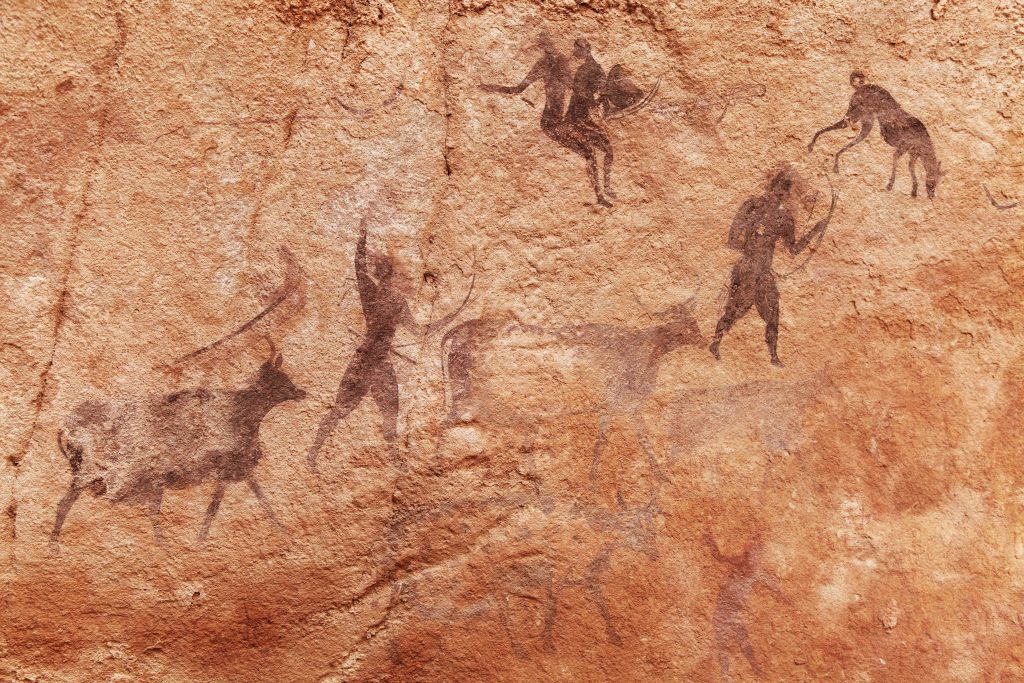
Found in caves across the world, from Europe to Asia, these paintings depict animals, humans, and abstract symbols. Created using natural pigments like charcoal and ochre, cave paintings often feature simple outlines and bold, stylized forms. The artists utilized the contours and irregularities of the cave walls to enhance their compositions, sometimes incorporating natural features into their designs. While the exact purpose of these paintings remains debated, they are believed to have served ritualistic, ceremonial, or symbolic functions, offering glimpses into the beliefs and daily lives of prehistoric societies.
Despite their simplicity, early cave paintings showcase the innate human impulse to create and communicate through art, laying the foundation for the rich artistic traditions that would follow. Cave art wasn’t limited by the imagination of the artist, but of the technical ability of the artist to express themself.
However, this is a limitation that man would conquer. The transition from early cave paintings to the art of the Renaissance period marked a significant evolution in artistic techniques and styles. Several key developments distinguish these two periods – most notably the invention of linear perspective by artists like Filippo Brunelleschi and Leon Battista Alberti, and the embrace of naturalism and realism seen in masterpieces like Leonardo da Vinci’s “Mona Lisa” and Michelangelo’s “David.”
In addition, there was the development of new artistic tools and materials, such as oil paint and canvas, which allowed for greater precision and versatility in painting.
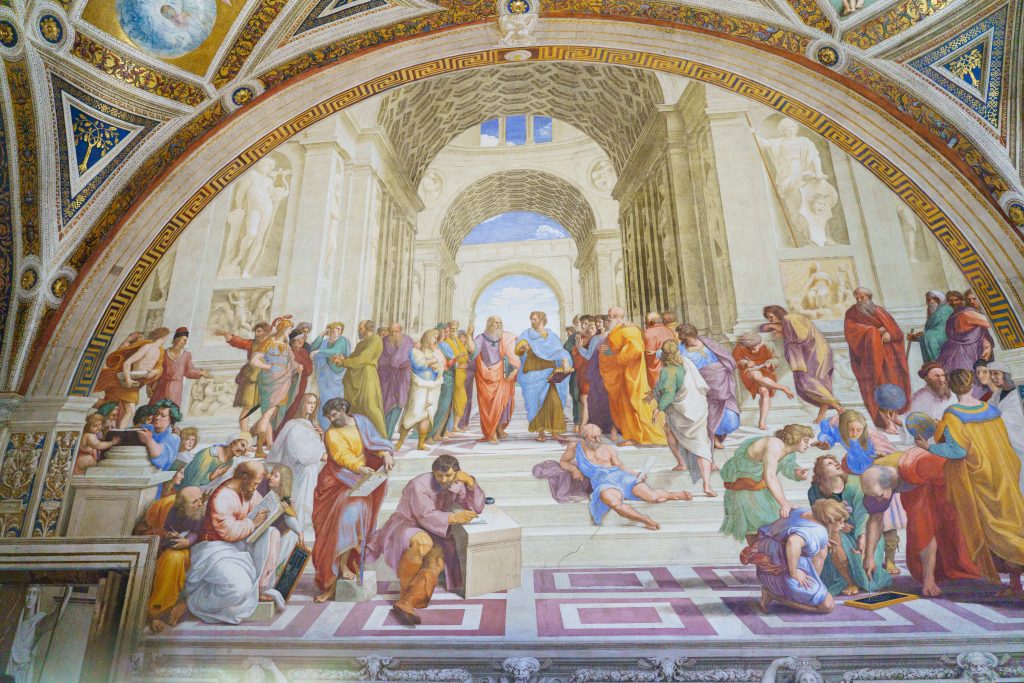
Art continued to evolve following the Renaissance. In the 18th century, the Enlightenment ushered in an era of rationalism and intellectual inquiry, leading to a revival of classical ideals in art. Neoclassical artists sought to emulate the grandeur and order of ancient Greece and Rome, producing works characterized by clarity, symmetry, and moral virtue. Jacques-Louis David’s “Oath of the Horatii” exemplifies this neoclassical style.
The Romantic movement of the late 18th and early 19th centuries rejected the rationalism of the Enlightenment in favor of emotion, imagination, and the sublime. Romantic artists like J.M.W. Turner and Caspar David Friedrich celebrated the awe-inspiring power of nature and the individual’s subjective experience of the world, often conveying a sense of mystery, awe, and transcendence.
The late 19th century saw the emergence of Impressionism, a revolutionary artistic movement that challenged traditional techniques and conventions. Impressionist artists like Claude Monet and Edgar Degas sought to capture the fleeting effects of light and atmosphere through loose brushwork and vibrant color palettes, prioritizing the artist’s subjective perception over objective representation.
Finally, the 20th century witnessed a proliferation of avant-garde movements, from Cubism and Futurism to Surrealism and Abstract Expressionism. Artists like Pablo Picasso, Marcel Duchamp, Salvador Dalí, and Jackson Pollock pushed the boundaries of artistic expression, exploring new ways of seeing, thinking, and creating. These movements challenged traditional notions of form, perspective, and representation, reflecting the tumultuous social, political, and cultural upheavals of the modern era.
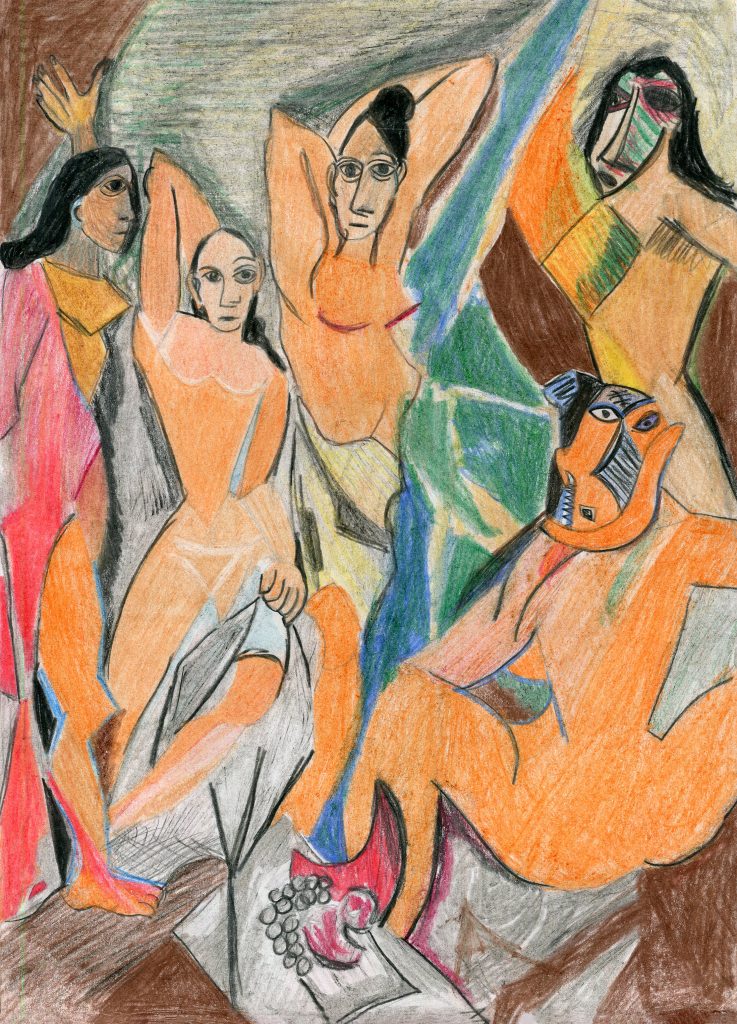
To compare cave paintings to the work of Frida Kahlo or Andy Warhol is to witness the cultural impact of art in the modern period, which stands as a testament to humanity’s evolving creativity, intellectual curiosity, and societal values – and I argue that the evolution of storytelling has been no less revolutionary.
The History of Written Storytelling
Just like with art, the evolution of storytelling is a journey that spans the entirety of human history, reflecting the fundamental impulse to share experiences, convey knowledge, and explore the mysteries of existence. From the oral traditions of our earliest ancestors, who told stories around the campfire, to the written word of contemporary literature, storytelling has evolved alongside human civilization just like art has – adapting to cultural shifts, technological advancements, and changing societal values.
The earliest form of writing known to humanity is believed to be Sumerian cuneiform, which emerged in Mesopotamia (modern-day Iraq) around 3500 BCE. Cuneiform writing was characterized by wedge-shaped symbols inscribed on clay tablets using a stylus. This script initially evolved from earlier systems of accounting and record-keeping, eventually developing into a complex writing system capable of conveying a wide range of linguistic and literary expressions.
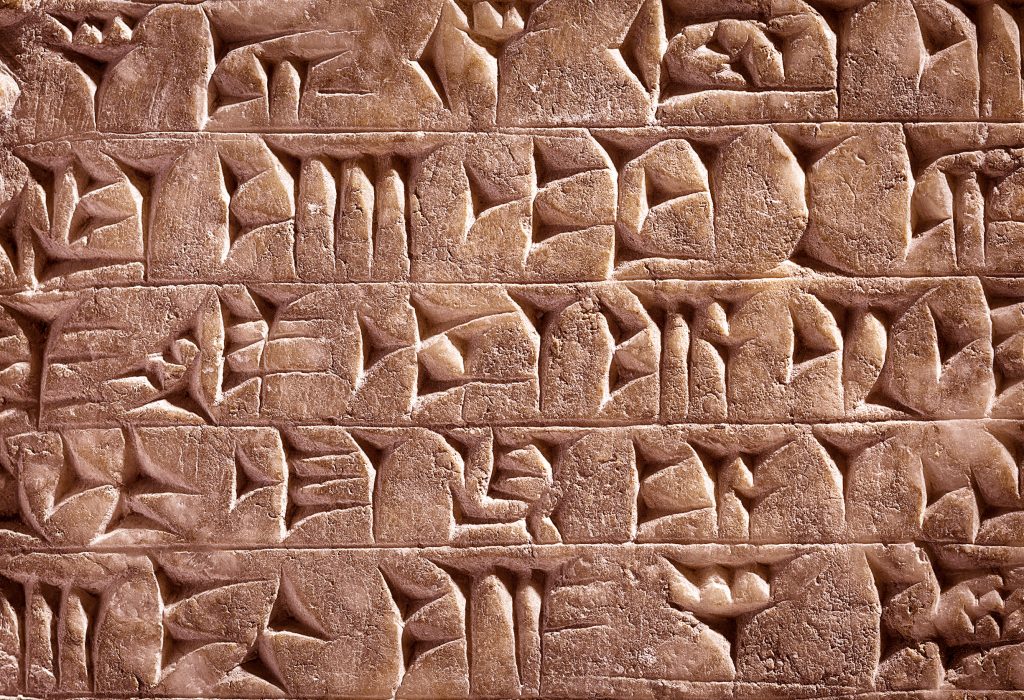
The purpose of early writing systems like cuneiform was primarily administrative and economic. They were used to keep records of transactions, inventories, legal contracts, and other administrative documents related to the governance of city-states and the management of agricultural resources. Cuneiform also played a crucial role in the dissemination of knowledge, with scholars and scribes using writing to record religious texts, scientific observations, and historical narratives.
However, as writing evolved into a powerful medium for communication, expression, and knowledge transmission, early authors also began to use it as a tool to record fictional narratives – telling the stories that had previously been passed down through the oral tradition.
One of the most famous examples of early written storytelling is the Epic of Gilgamesh, a Sumerian epic poem that recounts the adventures of Gilgamesh, a legendary king of Uruk, and his quest for immortality. Written on clay tablets in cuneiform script, the Epic of Gilgamesh is one of the earliest known works of literature and provides valuable insights into the cultural, religious, and social milieu of ancient Mesopotamia.
In ancient Greece, the development of the Greek alphabet around the 8th century BCE facilitated the recording of oral traditions and the emergence of written literature. The Homeric epics, the Iliad and the Odyssey, attributed to the legendary poet Homer, are among the earliest and most influential works of Western literature. These epic poems recount the exploits of Greek heroes like Achilles and Odysseus and are considered foundational texts of Western literary tradition.
Throughout antiquity and the Middle Ages, written storytelling flourished in various cultures and civilizations, including ancient India, China, Persia, and the Arab world. Epics, myths, legends, and folktales were recorded in written form, preserving cultural heritage and transmitting moral, religious, and philosophical teachings to future generations.
However, it wasn’t until the invention of the printing press by Johannes Gutenberg in the 15th century that the dissemination of written stories was truly revolutionized – making books more accessible and affordable to a wider audience. This led to the proliferation of printed literature and the rise of new literary forms and genres, including novels, short stories, and plays, during the Renaissance and the Enlightenment.
Notable examples include William Shakespeare’s plays, such as Hamlet, Romeo and Juliet, and Macbeth, which continue to be celebrated for their rich characters, intricate plots, and profound themes. Miguel de Cervantes’ Don Quixote (1605) is considered one of the earliest modern novels, blending elements of satire, romance, and adventure in its depiction of the delusional knight-errant Don Quixote and his loyal squire Sancho Panza.
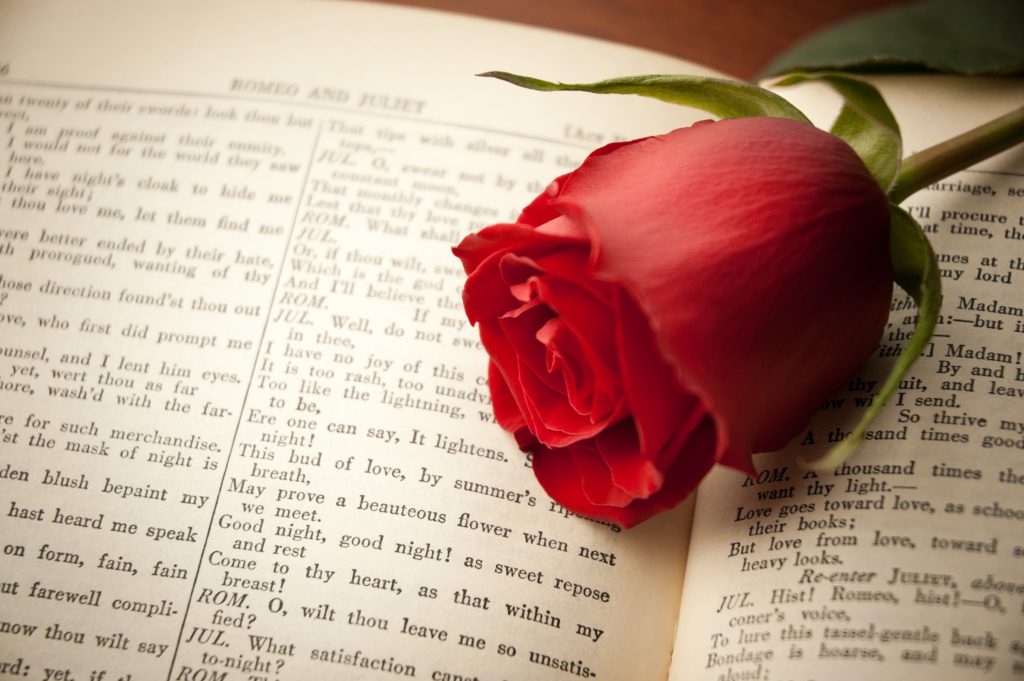
The 18th century saw the rise of the novel as a dominant literary form, with authors like Daniel Defoe (Robinson Crusoe) and Jane Austen (Pride and Prejudice) exploring themes of individualism, romance, and social commentary. In the 19th century, the Romantic movement emphasized emotion, imagination, and the sublime, giving rise to works like Mary Shelley’s Frankenstein (1818), a pioneering work of science fiction that explores themes of ambition, morality, and the nature of humanity.
Later, Charles Dickens’ serialized novels, including Oliver Twist, Great Expectations, and A Tale of Two Cities, captured the social and economic realities of Victorian England while showcasing Dickens’ vivid characters and storytelling prowess.
The early 20th century witnessed the emergence of modernist literature, characterized by experimentation with narrative form, language, and perception. Examples include James Joyce’s Ulysses (1922) and Virginia Woolf’s Mrs. Dalloway (1925). The mid-20th century saw the rise of existentialist literature, with authors like Albert Camus (The Stranger) and Jean-Paul Sartre (Nausea) exploring themes of alienation, absurdity, and the search for meaning. Post-World War II literature grappled with the complexities of identity, memory, and trauma, as seen in works like Elie Wiesel’s Night (1956) and Toni Morrison’s Beloved (1987).
In the 21st century, digital technologies have transformed the landscape of written storytelling, with e-books, audiobooks, and online publishing platforms offering new avenues for distribution and consumption. Most importantly, digital publishing democratized the process for self-published books to get global distribution – completely bypassing the gatekeepers of traditional publishing, and giving diverse voices and perspectives an increasing representation in literature, reflecting the growing awareness of issues related to race, gender, sexuality, and social justice.

Social media and digital marketing have also transformed the way books are promoted and discovered, allowing self-publishing to emerge as a viable alternative to traditional publishing and empowering authors to connect directly with their audience in a way that has never happened before.
The Evolution of Writing
Just as developments in technology led to the evolution and improvement of art, I argue that the craft of writing fiction has evolved and improved significantly over the past century because of the changes I just outlined, in addition to reflecting changes in literary trends, cultural norms, and reader preferences. This is why modern readers often find older books – especially those written a century or more ago – difficult to get into and enjoy.
One notable development over the course of the last century, for example, is the increased use of dialogue as a narrative device to convey character, plot, and emotion more effectively. In early 20th-century literature, authors like Ernest Hemingway revolutionized the use of dialogue with their spare, minimalist style, as seen in works such as The Sun Also Rises (1926) and A Farewell to Arms (1929). Hemingway’s dialogue-driven narratives often feature short, declarative sentences and realistic, colloquial speech patterns, creating an immediacy and intimacy that draws readers into the characters’ inner lives.
Another trend in modern fiction is the use of shorter sentences and paragraphs to enhance pacing and readability. This shift towards brevity and conciseness can be observed in the works of contemporary authors like Lee Child, particularly in his Jack Reacher series. Child’s fast-paced storytelling relies on short, punchy sentences and brisk dialogue exchanges to maintain momentum and engage readers of all ages.
Additionally, the 20th century saw the emergence of various narrative devices and experimental techniques that challenged traditional storytelling conventions. For example, in The Sound and the Fury (1929) by William Faulkner, the use of stream-of-consciousness narration offers readers a glimpse into the fragmented thoughts and memories of the characters, blurring the boundaries between past and present. Similarly, in Beloved by Toni Morrison, the non-linear structure and shifting perspectives create a haunting and immersive reading experience, as the narrative unfolds through a kaleidoscope of voices and memories.
Furthermore, the advent of postmodernism in literature has led to playful experimentation with narrative form and metafictional techniques. Authors like Jorge Luis Borges, Italo Calvino, and Salman Rushdie have pushed the boundaries of storytelling with their inventive use of intertextuality, unreliable narration, and self-reflexive storytelling. In Rushdie’s Midnight’s Children (1981), for instance, the protagonist’s personal history becomes intertwined with the broader historical events of post-colonial India, blurring the line between fact and fiction.
Overall, the craft of writing fiction has evolved in response to changing literary trends, cultural influences, and technological advancements. From Hemingway’s spare prose to Lee Child’s brisk pacing and Rushdie’s intricate narrative structures, contemporary authors continue to push the boundaries of storytelling, creating works that resonate with readers and reflect the complexities of the modern world.
And since the development of self-publishing on digital platforms, the craft of writing has undergone an even more significant evolution, leading to greater diversity, accessibility, and experimentation in literature.
One notable impact of self-publishing is the emergence of niche genres and subgenres that may have been overlooked or marginalized by traditional publishing houses. For example, the rise of platforms like Amazon Kindle Direct Publishing has allowed authors to explore niche interests and cater to specialized audiences, leading to the proliferation of genres such as urban fantasy, cozy mysteries, and dystopian fiction.
A great example is the work of self-published author Jamila Jasper, who is one of the best known authors in a romance subcategory known as BWWM (standing for romance between a Black woman and a white man.) In the days of traditional publishing, these were the sorts of novels it would be difficult to get published, because the gatekeepers of publishing would argue that they “lacked commercial viability.”
However, after self-publishing dozens of bestselling BWWM novels, Jamila Jasper has proven how false that assumption was – with her books appealing to a massive audience of eager buyers who’d never had their interests catered to before.
Jamila is a perfect example of how self-publishing has democratized the publishing process, enabling authors from diverse backgrounds to share their stories and voices with the world. This has led to greater representation and diversity in literature, with authors exploring a wide range of cultural perspectives, identities, and experiences.
In literature, another great example is Angie Thomas’ debut novel The Hate U Give (2017), which addresses issues of race, identity, and police brutality. The book gained widespread acclaim after being self-published online before being picked up by a traditional publisher.
Self-publishing has also facilitated greater experimentation and innovation in storytelling techniques and formats. Authors are no longer bound by traditional publishing constraints and can freely experiment with narrative structures, genre-blending, and multimedia storytelling. One example is the success of Andy Weir’s The Martian (2011), which was initially self-published as a serialized story on his blog before being released as an e-book. Weir’s use of scientific accuracy, humor, and suspense in his narrative captivated readers and led to a traditional publishing deal and a subsequent film adaptation.
Moreover, self-publishing has enabled authors to maintain greater control over their creative works, from writing and editing to cover design and marketing. This autonomy has empowered authors to build their brands, connect directly with readers, and cultivate loyal fan bases. For example, Hugh Howey’s dystopian science fiction series Wool (2011) gained a massive following through self-publishing, leading to lucrative publishing deals and international success.
Conclusion
Overall, the advent of self-publishing on digital platforms has merely continued centuries of evolution for the craft of writing – democratizing access to publishing, fostering greater diversity and experimentation, and empowering authors to take creative risks and reach global audiences on their own terms.
As the self-publishing landscape continues to evolve, it also promises to continue reshaping the literary landscape as a whole; and redefine the future of storytelling in exciting and unpredictable ways.
Overall, I ague that this has made writing better.
And if not better, at least more sophisticated. Just as the evolution of art added sophistication to the ways in which artists could express themselves through drawing, painting, and sculpture, developments in the way in which we tell stories has helped make written storytelling more accessible to a much wider audience – and readers are taking advantage of that opportunity!
That’s something that might come as a surprise to many people who assume that a generation with access to Smart Phones and the Internet would read less. However, the opposite is true across the board.
In terms of traditional publishing, Publishers Weekly reports that sales of print books continue to grow year-after-year. In 2019, sales were up 8.2% from the previous year, reaching 693.7 million units. In 2020, sales further increased to 757.9 million units, representing an 8.9% growth compared to the previous year. 2023 data reports a total of 767.36 million print books being sold.
In terms of digital publishing, e-book sales revenue in the United States is estimated to have reached $4.23 billion in 2023, with 38.7% of people aged 18-29 in the United States reading e-books.
And the written word is also the cornerstone of the audiobook industry, which the Audio Publishers Association’s annual sales survey reports to have enjoyed its 11th straight year of double-digit growth in sales.
While traditional reading habits may have shifted, people are consuming literature more than ever before, albeit in non-traditional ways such as e-books, audiobooks, and online platforms – and I argue that is is because writing, as a whole, has just gotten better.
I also argue that self-published authors continue to play a pivotal role in this evolution, bringing their diverse perspectives, voices, and experiences to the literary landscape (and if you’re a self-published author, this includes you!)
By telling your stories, which may once have been overlooked or marginalized by traditional publishers, you’re playing your own part in enriching the canon of literature and broadening the scope of human storytelling. Your contribution is increasingly important because your unique perspective plays a vital role in fostering empathy, understanding, and connection in an ever-changing world.
As self-publishing continues to shape the future of literature, the voices of independent authors will continue to play a central role in driving further innovation and evolution in the craft of writing; and that makes storytelling better as a whole.
So, while I respect my friends who claim to only read “the classics” and shun digital literature, I also feel kind of sorry for them. Their assumptions and snobbery about how classic literature is “better” than modern books is fundamentally wrong; and they’re robbing themselves of the opportunity to learn that for themselves when they choose to ignore the largest growing segments of writing.




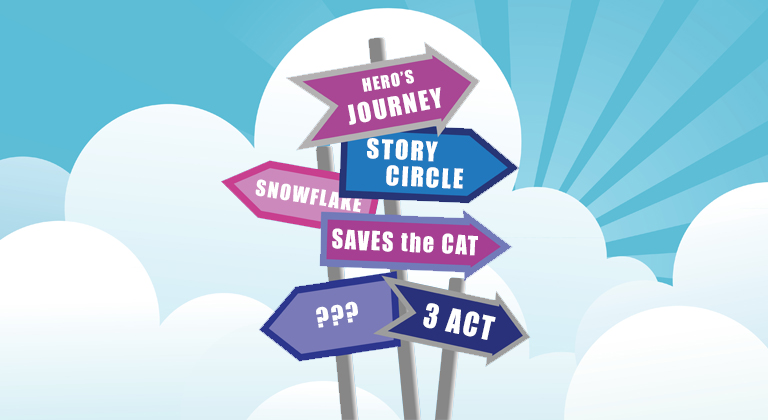


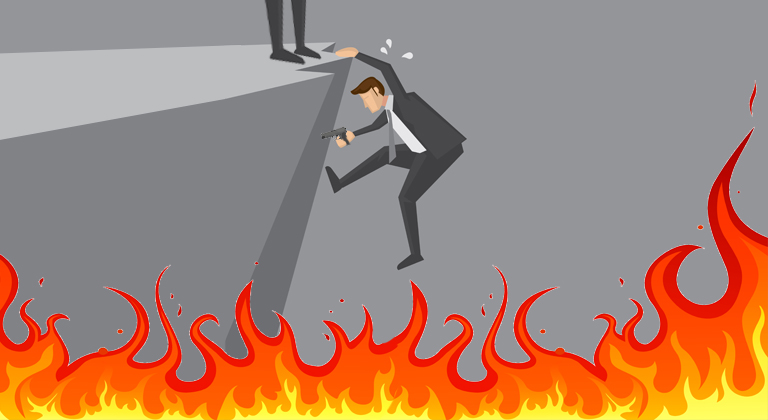


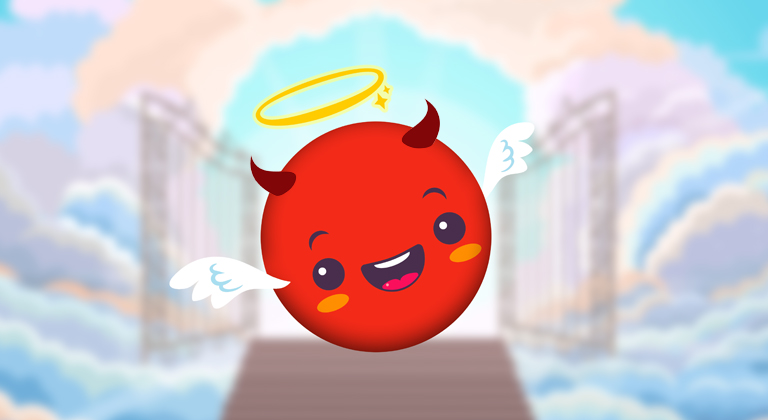
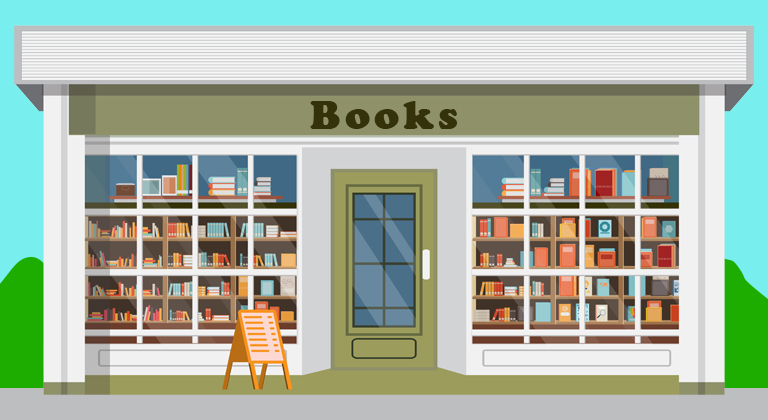
You didn’t mention the rise of LLMs, Ginger – I assume ChatGPT helped you put this excellent art history lesson together? if not – well done!
Seriously, LLM’s are pointing the way. Did you know the likes of ‘Sora’ are not only capable of writing novels but creating a Hollywood-style blockbuster out of a prompt like ‘Make me a James Bond movie’? Not a two-hour epic, granted – just a few seconds at the moment – but it is only a matter of time. How are we writers/actors/wardrobe departments/camera operators, etc. supposed to compete with that?
But yes, I agree, today’s (human) writing is better than many of the greats. I’m currently struggling with Crime and Punishment, and For Whom the Bell Tolls. Both are guilty of using ten words when one will do in my opinion but that might be the dumbing-down effect of this new social media fad for immediate gratification via an addictive stream of ten-second videos!
Great read as ever, Ginger – keep up the good work